An Ordinary Training Flight Begins
It was a clear, dry California morning—typical for July. The skies over Murrieta were blue, the winds calm, and conditions ideal for flight training. Around 9:00 AM, a Robinson R22 Beta helicopter lifted off from French Valley Airport with two people aboard: a seasoned 61-year-old flight instructor and his student, a 51-year-old private pilot working toward his rotorcraft rating.
The instructor brought to the flight over 10,600 total hours of experience, including 251 hours logged in the preceding six months. He held a commercial pilot certificate and a flight instructor certificate, both with rotorcraft-helicopter ratings. The student had logged just 80 hours of total flight time—20 of those in the past six months—and had been training in helicopters for about a week, accumulating roughly 15 hours in that time.
Their mission that morning: to practice off-field landings—a crucial skill for any helicopter pilot.
The Demonstration That Went Wrong
About an hour into the flight, the instructor pointed to a hill and told the student he would demonstrate a “fast landing.” The maneuver involved approaching the hill at about 50 knots, flaring to slow down, and then entering a hover.
As planned, the instructor brought the helicopter to a hover at the hilltop—about 3 to 4 feet above the ground—heading into the wind. Then came the transition: a left pedal turn to reorient the aircraft. But something went wrong.
As the helicopter turned, it suddenly rolled rapidly to the right. The student, who said he was not on the controls at the time, watched in shock as the main rotor blades struck the ground. The helicopter rolled and slammed onto its left side.
When the dust settled, the student managed to crawl out, unhurt. But the instructor was trapped under the wreckage. He did not survive.
What Happened?
The NTSB determined the defining event of the crash to be a dynamic rollover—a phenomenon that can happen when a helicopter’s skid becomes fixed to the ground and the aircraft begins to pivot uncontrollably around it.
The terrain at the accident site was uneven, covered in dry brush and sage ranging from 1 to 4 feet tall. Investigators concluded that during the left pedal turn, the helicopter’s skid likely contacted some of this vegetation. That minor contact would have been enough to set off the chain of events that led to the rollover.
The helicopter, N7527Y, was in good mechanical condition. Post-crash inspections of the airframe and engine revealed no pre-impact malfunctions. Even the engine was run successfully after the crash. The blades, however, told a violent story: one was found 135 feet from the fuselage, having separated from the hub during the impact sequence.
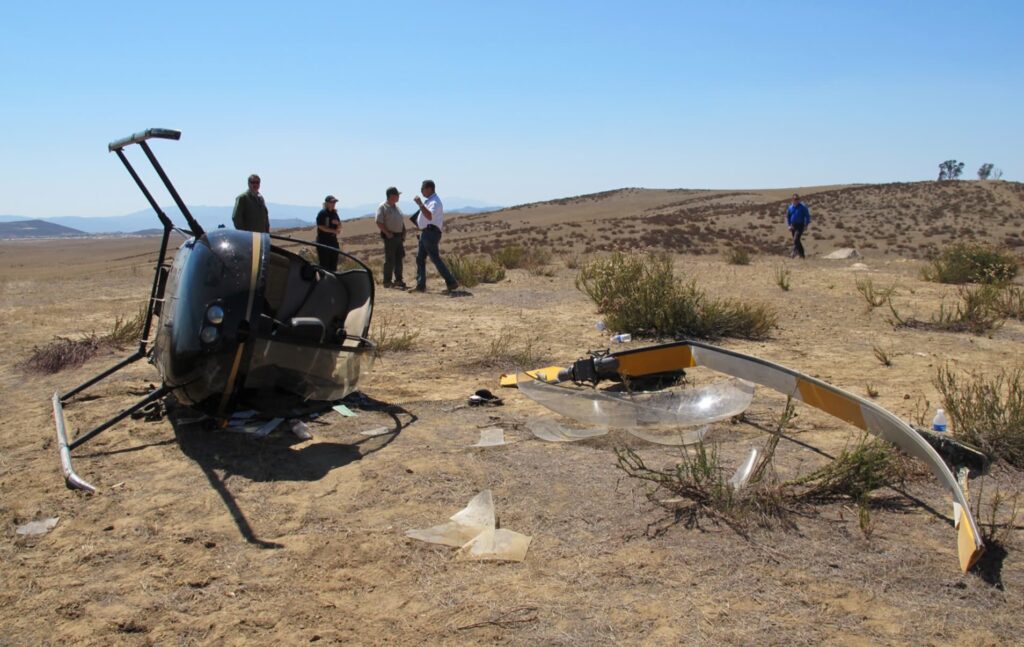
Lessons in Terrain, Technique, and Margin for Error
Helicopter pilots train for precision, but nature doesn’t always cooperate. This mishap underscores how even small details—like a patch of 4-foot-high sagebrush—can have devastating consequences.
Hovering turns, particularly in confined areas or over sloped terrain, demand heightened awareness. The instructor in this case was performing a left pedal turn—typically more challenging than a right pedal turn due to torque and airflow characteristics in counterclockwise rotor systems like the R22’s. Left pedal turns also often require more power, which can narrow the margin for error when operating close to the ground.
The brush likely caused a skid to catch just enough to trigger dynamic rollover. Once initiated, this type of rollover progresses in fractions of a second. Unless corrective action is taken immediately—and effectively—it’s often irreversible.
It’s worth noting that neither occupant was wearing a helmet, nor were they required to. The instructor died from craniocerebral trauma. While helmets are not a regulatory requirement in most GA helicopter operations, this accident is a sobering reminder of how vulnerable helicopter occupants are during rollovers.
Training Environments Can Be Unforgiving
This was not a student mistake. The instructor had the controls and was demonstrating a maneuver. It’s easy to forget that instructional flights—while necessary—carry unique risks. Instructors often place themselves in challenging flight conditions so that students can learn by watching or doing.
But off-field landing practice, even in good weather, presents its own hazards. Loose dirt, vegetation, and uneven surfaces make hover work much less forgiving than a neatly groomed helipad. In this case, the brush won.
The Aircraft and Its Legacy
N7527Y was a 2004 Robinson R22 Beta, a widely used two-seat helicopter known for its responsiveness and affordability—especially popular in training environments. It had a maximum gross weight of 1,370 pounds and was powered by a Lycoming O-360 engine producing 145 horsepower at sea level. At the time of the accident, the aircraft had 4,267 total hours of flight time and had recently undergone its 100-hour inspection with no discrepancies noted.
Though the R22 has a solid service record, it is not without its critics—particularly regarding its susceptibility to accidents involving low inertia rotor systems, dynamic rollover, and mast bumping. The FAA has even issued safety notices aimed specifically at R22 and R44 pilots to highlight these issues.
A Life Lost, A Lesson Learned
This accident is tragic not just because of the loss of life, but because it happened during a routine demonstration—a moment that likely felt comfortable, familiar, and manageable to an experienced pilot.
But aviation punishes complacency and has no tolerance for minor miscalculations near the edge of the flight envelope. This case drives home the importance of:
- Avoiding hover turns over uneven or obstructed terrain
- Being aware of dynamic rollover risks and triggers
- Remaining vigilant during demonstration flights
- Considering the value of helmets for flight instructors and students
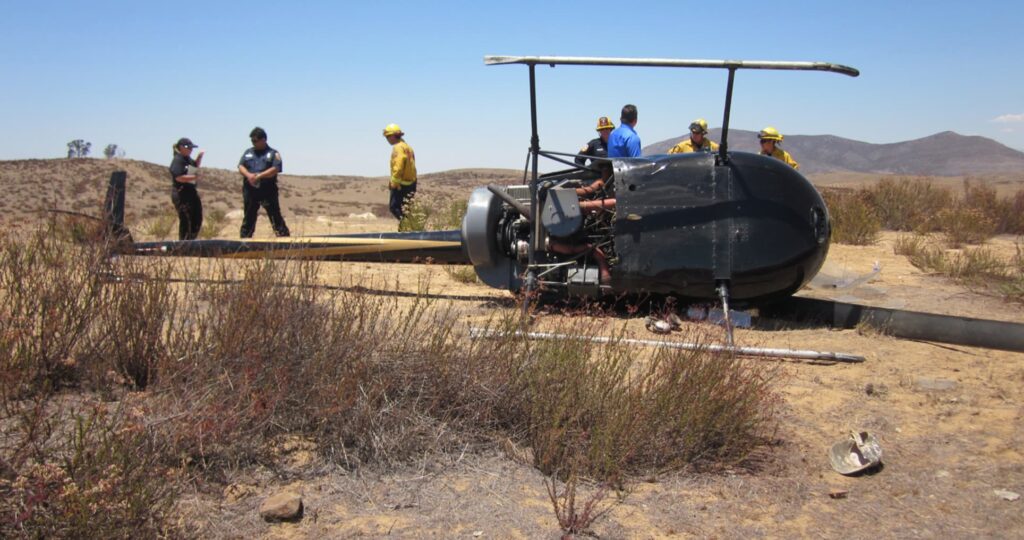
Final Thoughts
The accident that claimed N7527Y and the life of its instructor wasn’t the result of mechanical failure, bad weather, or reckless flying. It was a momentary lapse in judgment—hovering just a bit too close to brush, in the midst of a maneuver, without enough margin to recover.
For students, instructors, and all helicopter pilots, the lesson is clear: respect the terrain, know your limits, and never underestimate the risks—no matter how routine the maneuver may feel.

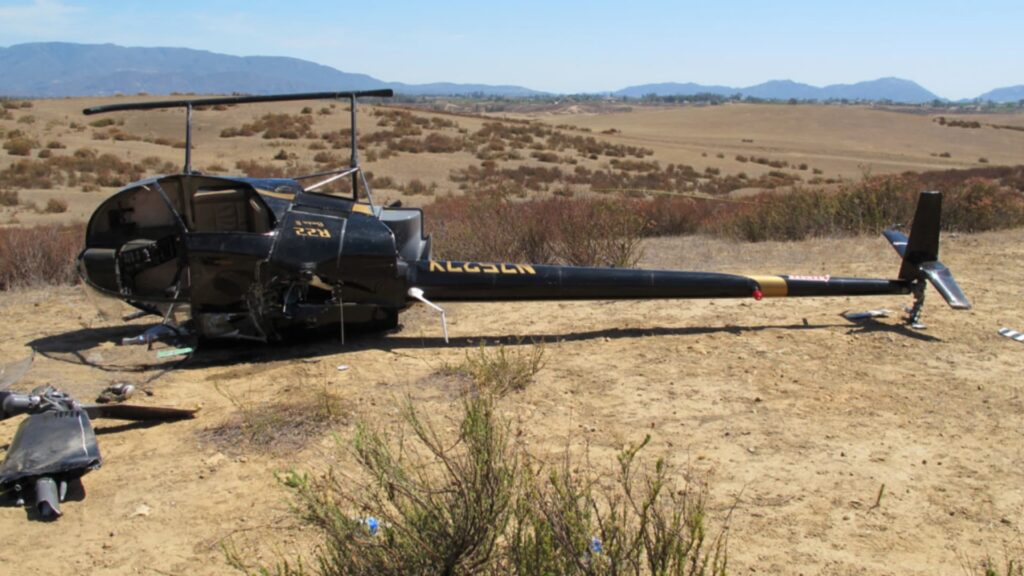



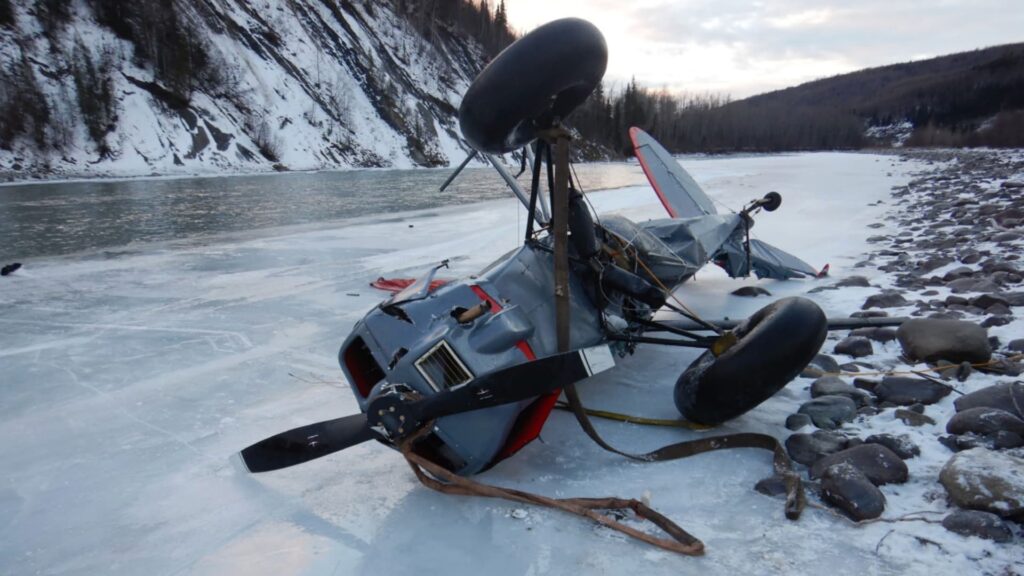
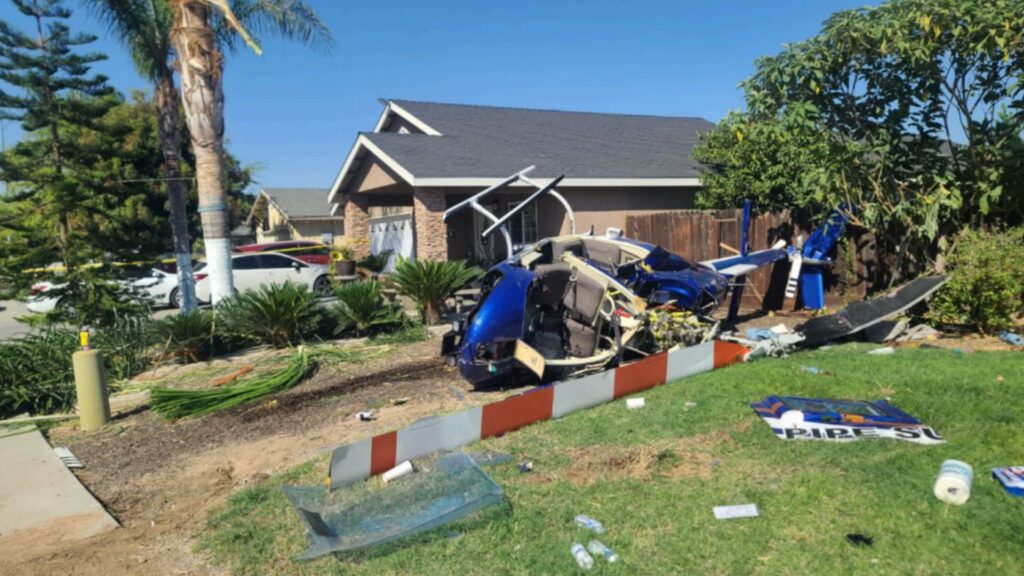
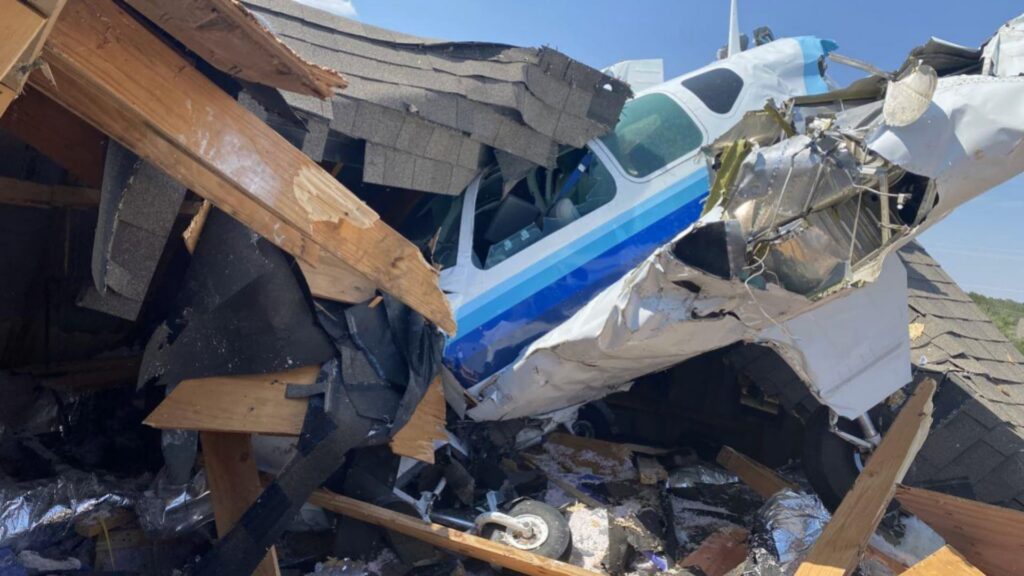
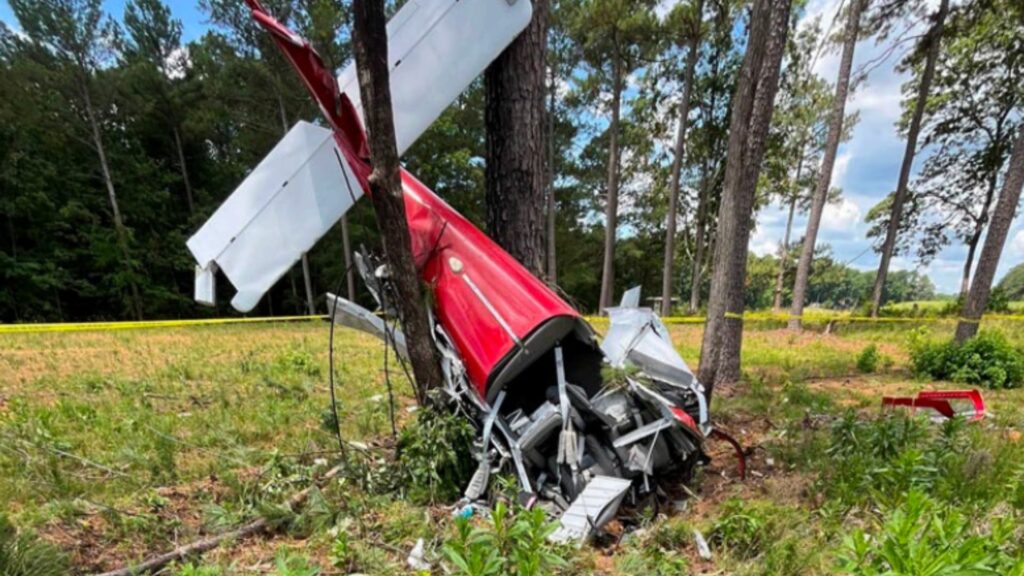
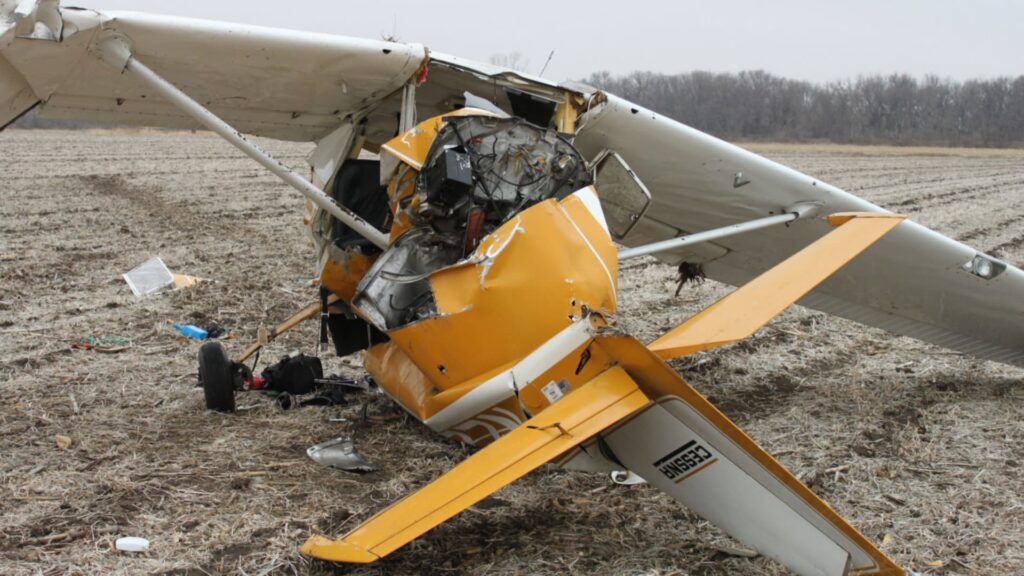
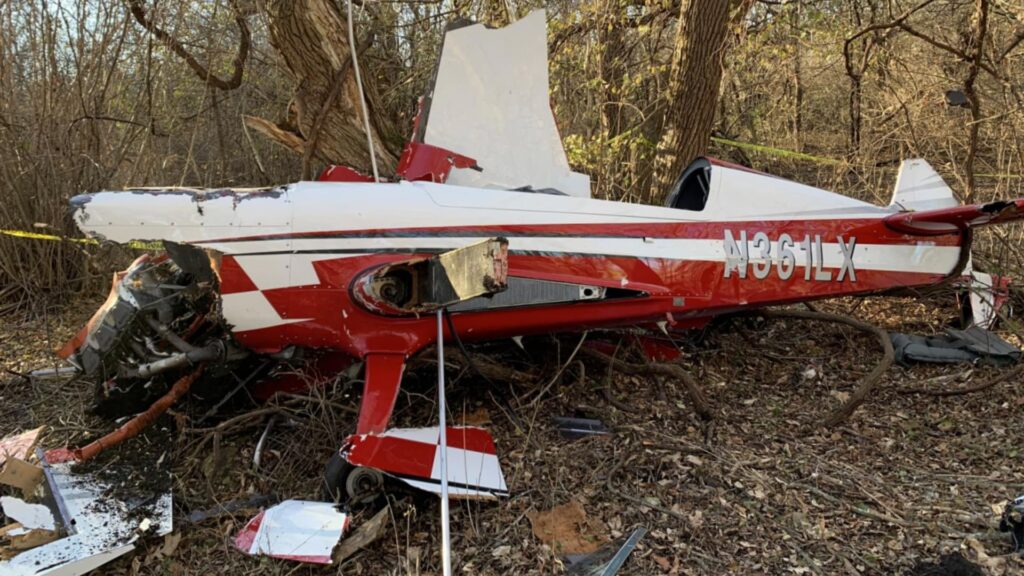
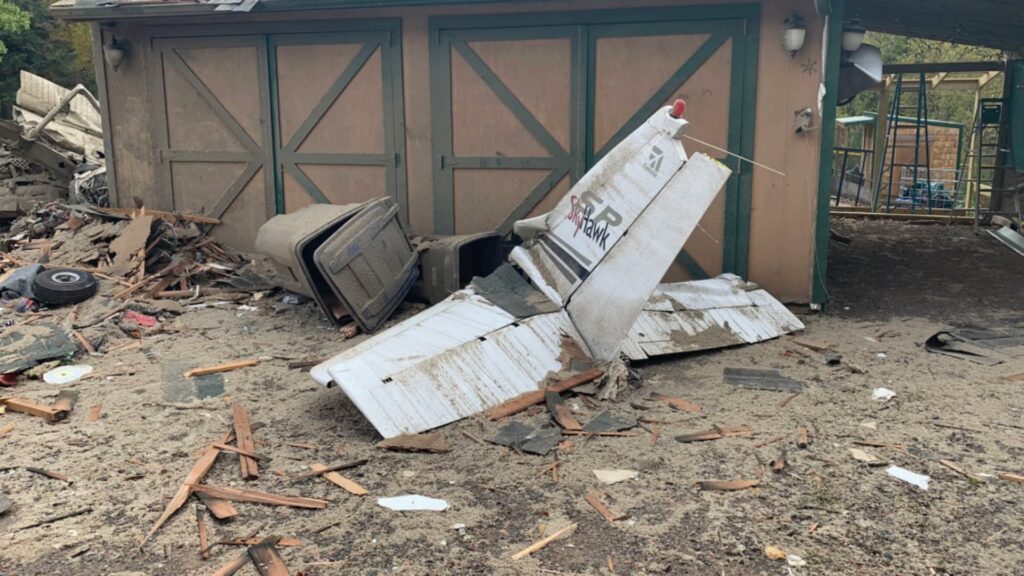
One Comment
Do you think he could have landed safely there without the turn?